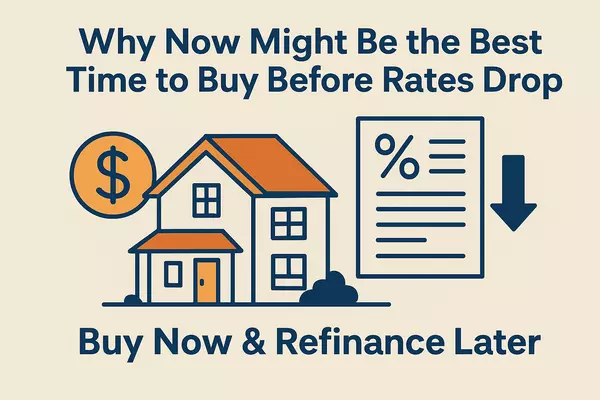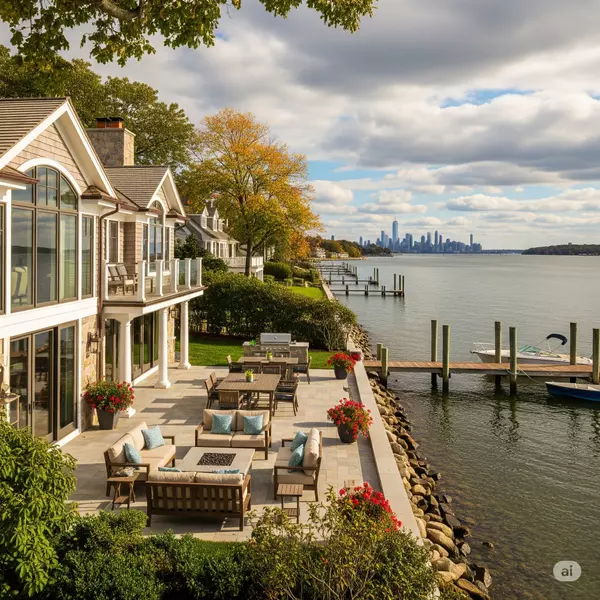Political Winds in NYC: Risks and Opportunities for Real Estate Investors

1. What’s Going On Politically in NYC Right Now
Over the past year, New York City has seen a storm of political activity that’s rippling through its real estate landscape. Here are some of the biggest developments:
a) Housing Policy Overhaul & Rent Freeze Debate
-
Zohran Mamdani, a democratic socialist, has pushed a bold agenda: a rent freeze for all rent-stabilized apartments. This has put many landlords on edge, especially as operating costs rise.
-
Beyond that, Mamdani proposes a massive public-led affordable housing build: perhaps 200,000 new rent-stabilized units, funded through municipal mechanisms.
-
For many in real estate, this raises existential financial risk.
b) Tax Pressure
-
Part of the plan includes tax hikes on corporations and high-income earners.
-
Some analysts also point to proposals to revisit how multi-family and luxury properties are assessed for property tax — which could upend financing models
-
Meanwhile, others argue the current property tax system already burdens multifamily housing disproportionately. A report says the tax code “overtaxes large multifamily buildings,” making it hard to build more housing.
c) Tenant Protections & Eviction Reform
-
The City Council recently expanded the definition of tenant harassment, now including “unlawful evictions.”
-
There’s also movement to strengthen tenants’ rights more broadly — legal services, stricter protections, and more.
-
At the same time, the Fair Chance Housing law went into effect in 2025, preventing many landlords from discriminating against tenants because of criminal history.
d) Broker Fee Reform
-
A big win for renters: mandatory broker fees paid by tenants (when broker represents the landlord) are being eliminated.
-
While positive for affordability, this shifts costs back on landlords, who may have to absorb the broker commission or find other ways to make up the cost.
e) Zoning Reform = Mixed Signals
-
On one hand, there’s a zoning reform push (“City of Yes”) aimed at unlocking more housing — loosening height limits, relaxing some regulations, etc.
-
On the other hand, affordability mandates built into new developments could squeeze developers’ margins.
-
But there’s a real silver lining: recently passed ballot measures reduce the power of individual City Council members to veto development in their districts — making approvals for new housing potentially smoother.
f) Tax Cuts & Public Safety
-
Meanwhile, New York State Governor Kathy Hochul has proposed a $1B income tax cut, part of a broader “affordability agenda.”
-
That plan is paired with a push for increased police presence in subways, addressing public safety concerns.
2. Why Investors & Property Owners Are Worried — And Why Some See Opportunity
Risks:
-
Cash Flow Pressure
-
A rent freeze could compress income from stabilized units, making it harder for landlords to cover rising expenses.
-
If tax burdens go up, especially on high-end or multifamily properties, that could erode profitability.
-
-
Regulatory Uncertainty
-
Progressive mayoral policies create ambiguity — especially because implementation may depend on Albany (state-level) support.
-
With harsher tenant protections, landlords may face more risk (or cost) from harassment and eviction claims.
-
-
Capital Flight or Hesitation
-
Some investors may shy away from NYC, fearing backlash from aggressive regulatory reforms.
-
Indeed, stock for certain NYC-focused REITs dropped as uncertainty grew.
-
Opportunities:
-
Value Buy on Market Overreaction
-
Some analysts argue that fears around Mamdani are overblown — and that declines in REIT shares may create buying opportunities.
-
For long-term investors, weakness in stock prices could be a chance to enter or expand positions in NYC real estate.
-
-
Unlocking Development with Zoning Reform
-
The new zoning reforms + streamlined approvals (reduced veto power) may enable more housing development. That isn’t just for affordable housing — there may be room for mixed-use or even market-rate plays.
-
Given the city’s tight housing supply, well-capitalized developers may be able to leverage this to deliver projects faster.
-
-
Public-Private Affordable Housing Partnerships
-
With a big push toward publicly funded units, there could be opportunities for public-private collaboration. Investors who partner with the city could participate in building affordable housing, tapping into subsidies or favorable financing.
-
Also, the $5 billion “City for All” initiative shows the city is serious about putting money into affordability and infrastructure.
-
-
Portfolio Diversification
-
Given the political risk concentrated on stabilized apartments, some investors might pivot to non-rent-stabilized assets, or shift into other asset classes, mitigating regulatory risk.
-
Those who believe in the long-term growth of NYC may view current uncertainty as a way to rebalance their exposure at more attractive prices.
-
-
Enhanced Tenant Relationships
-
Landlords who proactively adapt — e.g., by improving tenant services, legal compliance, and reconciling with tenant advocacy — may reduce conflict risk and build goodwill. That can translate into lower turnover, fewer legal battles, and more stable occupancy.
-
3. Strategic Considerations for Investors & Owners
If you’re an investor or property owner watching these political developments, here are some practical strategies to navigate (and potentially capitalize on) them:
-
Stress-test your financial models: Run scenarios assuming rent freezes, higher taxes, and longer time to approval. Understand worst-case, base, and best-case outcomes.
-
Engage with local policymakers: Stay plugged into City Council hearings, zoning reform discussions, and community boards. Being involved gives you a voice and early insight.
-
Explore joint ventures: Partner with nonprofit housing developers or municipal programs. These partnerships may unlock deals with favorable financing and risk sharing.
-
Prioritize flexibility: Structure projects to pivot if conditions change. For example, plan phased developments or have contingency capital set aside.
-
Differentiate your portfolio: Consider a mix of stabilized rentals, market-rate assets, and development plays to balance risk.
-
Invest in compliance and tenant relations: Given stronger tenant protections, reducing legal risk and tenant dissatisfaction could save money in the long run.
4. The Big Picture: Why This Moment Matters
New York City is at a political inflection point. The balance between social justice (tenant protections, affordable housing) and capital attractiveness (developer returns, tax revenues) is being redefined. While that creates real uncertainty, especially for traditional landlords and investors, it also opens doors:
-
More housing supply could come if development accelerates under new zoning rules.
-
The city’s commitment to affordability could generate new funding streams and innovative deal structures.
-
Short-term market jitters might create long-term buying opportunities for patient, well-capitalized players.
In essence: risk is real, but so is opportunity. For investors who understand the political terrain and are willing to navigate it thoughtfully, NYC's evolving policy landscape could be a chance to build stronger, more resilient, and more socially responsible real estate portfolios.
Categories
Recent Posts










